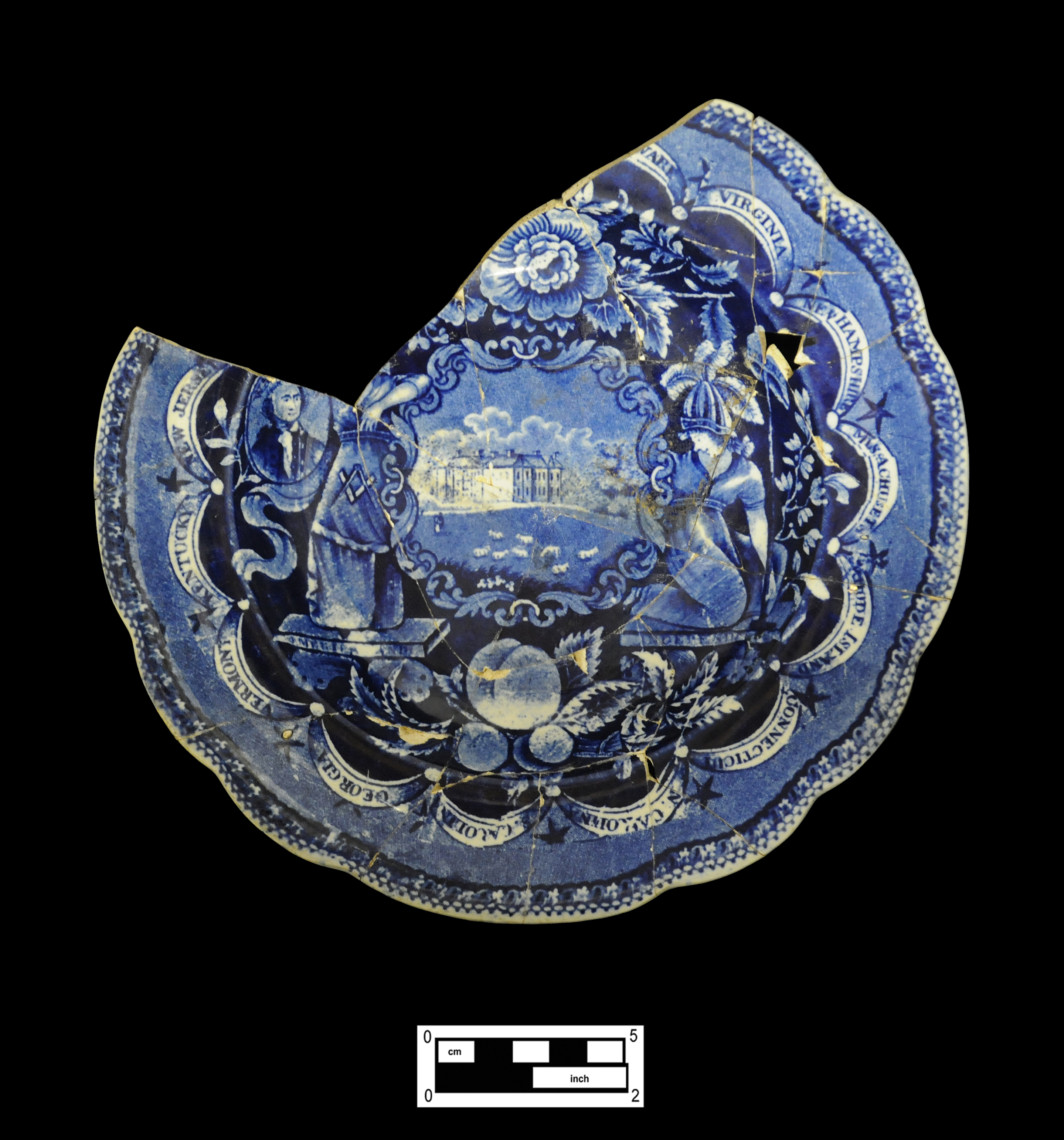Artifact of the Month — July 2015
To Artifact of the Month Index
To PAF Home
Clews “States Border” (“America and Independence”) Plate, ca. 1826-1834

This 8.75” diameter soup plate was probably designed to commemorate the 50th anniversary of the signing of the Declaration of Independence in 1826.
This small pearlware soup plate, recovered during archaeological excavations along I-95 in the Fishtown section of Philadelphia, was produced by Staffordshire potters James and Ralph Clews between 1826 and 1834. Created exclusively for export to America, this plate was probably designed to commemorate the 50th anniversary of the signing of the Declaration of Independence in 1826. This plate is part of a series of patterns that have come to be known as the “States Border” or “America and Independence” series. While each pattern in the series features a different central view, each central image is flanked by two female figures on plinths labeled “AMERICA AND” and “INDEPENDENCE.”
The figure on the left, wearing an apron bearing a square and compass, holds a portrait of George Washington and wears a blindfold labeled “JUSTICE.” The kneeling figure at right holds a staff on which a cap bearing the word “LIBERTY” is perched. Surrounding the figures of America and Independence are scalloped panels with the names of the first fifteen American states; Delaware, Pennsylvania, New Jersey, Georgia, Connecticut, Massachusetts, Maryland, South Carolina, New Hampshire, Virginia, New York, North Carolina, Rhode Island, Vermont, and Kentucky.
Interestingly, by the time this plate was produced, an additional nine states had entered the Union, but for some reason only 15 of the 24 states are represented in the pattern.
Surprisingly, the central images in this series are based on copperplate engravings published by William Marshall in London from 1825 to 1828. These engravings depicted British views; in this case a representation of Lartington Hall, a seventeenth-century country house in Yorkshire, England. The small size of the central views and the lack of titles were likely meant to hide that fact that English views were being featured in patriotic American patterns.
This write up was contributed to the Philadelphia Archaeological Forum by Thomas Kutys of AECOM, Burlington, NJ.
______
To Artifact of the Month Index
To PAF Home
by admin